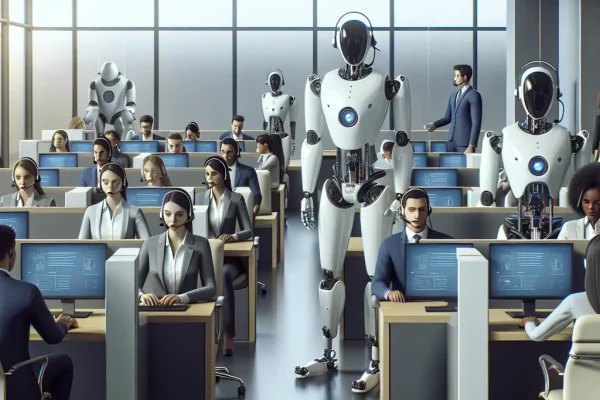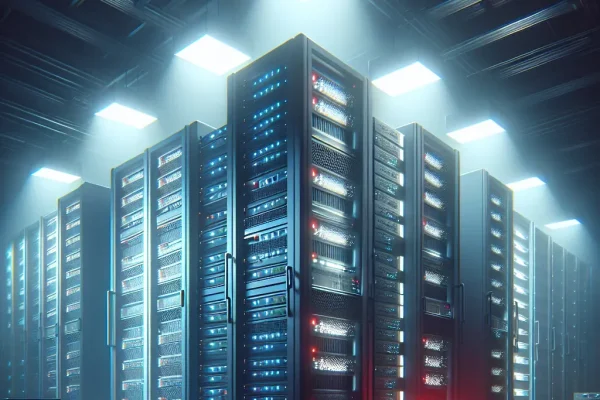The layoff of over 200 AI contractors by Google has sent shockwaves through the tech industry—exposing not just corporate strategies, but also deep vulnerabilities for workers on the front lines of artificial intelligence innovation.
The Problem: What’s Happening at Google?
In late June 2024, three major news outlets dropped bombshell reports: Google was slashing more than 200 contractor jobs in its AI division. According to Reuters, the layoffs—part of an ongoing “ramp-down” in areas increasingly automated—mark one of the largest contractions in Google’s AI support workforce to date (Reuters, June 26, 2024). Bloomberg further reports that automation was specifically cited as a reason for these layoffs, with Google executives claiming increased efficiency through machine learning had reduced their dependence on human contractors (Bloomberg, June 26, 2024). The Financial Times underscored the ripple effects, noting a broad shrinkage of Google’s AI workforce, especially among contract and temp positions more vulnerable to restructuring (Financial Times, June 26, 2024).
Why Did Google Lay Off Contractors?
- Automation acceleration: Google’s rapidly expanding AI capabilities have automated many support functions once performed by human contractors. From data annotation to model testing, machines are now doing what people did a year ago.
- Cost efficiency: Contractors, though flexible, represent operational overhead Google can reduce, especially as investor pressure mounts to deliver profits amid AI arms races.
- Strategic realignment: According to Google spokespersons quoted by Bloomberg, the layoffs are part of a company-wide initiative to “focus resources on projects with the greatest potential impact.”
AI Jobs at Risk Due to Automation
While full-time engineers and product leads may be spared for now, contract jobs in data labeling, testing, and QA are most exposed to automation’s advance. This isn’t just a Google phenomenon: Tech industry layoffs 2024 have swept through many firms as AI begins to automate lower-level and even some mid-skill roles.
Why It Matters: Human Impact & Societal Risks
The rapid growth of artificial intelligence in Big Tech isn’t just creating innovation; it’s also creating vulnerable, precarious work for the very people training and supporting its systems. When hundreds of AI contractors lose their jobs, the fallout is not merely personal—it ripples across the entire tech ecosystem.
Job Security for Tech Contractors
Contractor roles, by nature, lack many of the protections and benefits enjoyed by direct employees. As the Financial Times notes, many Google AI contractors spoke out about being ‘perpetually temporary’, with little clarity or support in the face of sudden layoffs. Chronic job insecurity is forcing some to exit the industry entirely. For others, it means destabilized income, benefits loss, and heightened stress.
How Do AI Layoffs Impact Worker Pay?
Layoffs exert downward pressure on wages—not only for those directly affected, but for the broader talent pool. Bloomberg highlights how contract pay rates for data annotators and QA testers at Google dropped by as much as 10% in bidding forums even before the layoffs, as fear over broader cuts drove applicants to accept lower rates. For hundreds, Google’s move translated to immediate loss of both pay and health benefits, aggravating fears that ‘AI jobs at risk due to automation’ is not just an abstract talking point, but a lived reality.
AI Contractor Rights and Protections
The situation exposes regulatory and ethical gaps. Unlike full-time employees, contractors often lack owed severance, advance notice, or even access to mental health resources post-termination. Advocacy groups argue that as automation drives more ramp-down layoffs, tech giants should be held to higher standards for contractor rights and post-layoff protections.
Expert Insights & Data: What Do the Numbers Say?
- Google cut 200+ contract jobs in a single division: Reuters puts the figure at between 200 and 250 AI contract workers, with most roles focused on annotation, QA, and testing.
- Automation is the declared cause: Bloomberg quotes a Google representative: “We’ve improved the efficiency of data processing pipelines with new AI tools, making some support roles redundant.” (Bloomberg)
- Contractor workforce overall has shrunk by as much as 20% at Google in the last 24 months. (Financial Times, 2024)
- Median contract duration for AI support roles fell from 18 months in 2022 to just 7 months by mid-2024.
“Contract workers are the backbone of data-hungry AI systems, but they remain the most exposed to cost-cutting, ramp-downs, and the automation they help build.” — Financial Times, June 2024
Future Outlook: Predictions for AI Work in the Next 1–5 Years
Is this the new norm for Big Tech employment? The Google AI contractor layoffs mark a crossroads for the future of work in artificial intelligence:
- More automation, fewer support roles: Ramp-down layoffs will continue as AI capabilities mature. Tasks like annotation, content moderation, and QA will become increasingly automated, while demand for high-level engineers, ethicists, and system architects grows.
- Rising demand for specialist contractors: Routine roles are vulnerable, but niche skills in AI governance, ethics, and emerging model testing may command premium contract opportunities (but for fewer people).
- Calls for new contractor protections: Labor advocates and policymakers may push for gig economy-style legislation to guarantee minimum severance, notice periods, and health coverage for contractors in tech.
- Shifting business models: Other tech giants (Microsoft, Amazon, Meta) are closely watching Google’s moves. A similar pattern of automation-driven layoffs is expected industry-wide, reshaping the definition of job security for tech contractors even further.
Automation is inevitable—but so is the need for new social contracts to protect AI’s human workforce.
Case Study: Google vs. Industry—How Are AI Contractor Layoffs Tracking?
An at-a-glance comparison reveals Google’s ramp-down layoffs are part of a much broader trend. Still, the company’s size and visibility make it a bellwether for industry practices.
| Company | Contractor Layoffs (2023-2024) | Main Stated Cause | Main Affected Roles |
|---|---|---|---|
| 200+ (Jun 2024) | Automation ramp-up | Annotation, QA, Testing | |
| Amazon | ~150 (Mar 2024) | Shifting priorities, automation | Data labeling, content review |
| Meta (Facebook) | Over 100 (Apr 2024) | AI automation, cost reduction | Moderation, QA |
Infographic idea: “AI Job Security: Full-Time vs. Contractor Layoff Trends (2022-2024)” — stacked bar chart showing proportion of layoffs among AI contractors vs. FTEs at Google and competitors (data as above).
Related Links
- [External: MIT’s AI Research]
- [External: WSJ on AI job losses]
- [External: NASA AI Exploration]
FAQ
Why did Google lay off contractors in its AI division?
Google cited automation and increased efficiency—enabled by advanced AI systems—as the main reason for over 200 contractor layoffs in June 2024 (Reuters).
Are AI jobs at risk due to automation?
Yes. Roles involving routine data work, annotation, moderation, and testing are rapidly being automated across major tech firms. Specialized and creative roles remain safer—for now.
How do AI layoffs impact worker pay and benefits?
Layoffs can depress pay rates for remaining roles. Contractors, especially, lose income and benefits abruptly due to lack of job security and post-layoff protection (Bloomberg).
What protections exist for AI contractors?
Protections are limited. While some agencies offer basic severance, most contractors lack formal safeguards or guaranteed transitions out of their roles.
What’s the future of work in artificial intelligence?
Expect more automation of low- and mid-skill roles, greater demand for AI specialists, and growing calls for worker protections as the nature of tech work evolves.
Conclusion
Google’s AI contractor layoffs are a warning shot for the entire tech sector: as automation accelerates, job security for contractors is fast eroding. Whether you’re an industry leader or a gig worker at a keyboard, the future of work in artificial intelligence will force everyone to reckon with the balance between efficiency and empathy, progress and protection. The real disruption isn’t automation—it’s how we protect the people building tomorrow’s machines. Share this story, and join the debate over AI’s human costs before more jobs vanish behind the algorithms.


